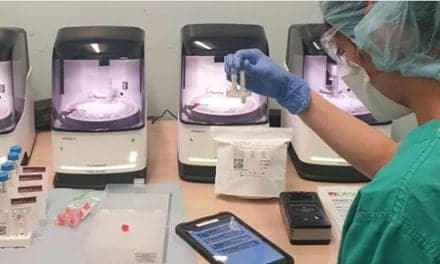Using newly developed and culturally informed methods, a University of Oregon (UO) team was able to more than triple the number of Latinx people getting tested for COVID, according to a recently published research paper.
In a new Journal of the American Medical Association Network Open paper, researchers in the UO’s Prevention Science Institute shared their findings from a study on COVID-19 testing outreach in the Oregon Latinx community. The results could shape outreach to Latinx communities across the country as well as suggest ways to tailor outreach to any group.
“This was the most challenging and rewarding work of my career,” says Dave DeGarmo, an associate research professor in the Prevention Science Institute. “I was really motivated to respond.”
The research, which also used the Cresko Laboratory at the UO, used a randomized trial of 33 COVID testing sites, which found that intervention by community health promoters was associated with 3.84 times more Latinx individuals tested per event than control sites and was associated with testing a higher rate of the Latinx population in Oregon.
Latinx Demographic Study
When the pandemic hit in 2020, DeGarmo and his research team were well-situated to respond to the question of why some populations in Oregon had higher testing rates than others, something that correlated directly with deaths. The Latinx community represents 13% of Oregon’s population, but in the early months of the pandemic it made up 35% of cases and three times more deaths.
“The worse the rates of testing, the worse the mortality,” DeGarmo says. “So getting more effective testing, making it accessible and getting that outreach into the communities, that translates to saving lives.”
DeGarmo’s research at the UO applies a statistical approach to stressful situations in families, such as divorce, military deployments, and single fathers.
For its study, the research team received funding from the National Institutes of Health through the Rapid Acceleration of Diagnostics initiative, which was launched to develop rapid and accurate testing and increase test availability nationwide.
DeGarmo and his team then designed a study to test outreach methods. The team worked quickly and had to create testing sites to try out their theories for outreach.
“It required a lot of coordination. Fast coordination,” says Camille Cioffi, a research associate at the institute.
Cioffi, who grew up in Eugene and graduated from the UO in 2020, knew she wanted to jump right into research that would help save lives during the pandemic.
“This just felt like the right thing to do, more than anything,” she says.
Unlike most other researchers, members of the Prevention Science Institute team couldn’t rely on existing facilities at the UO. They had to hire and train staff and develop the field-testing methods from the ground up because the outreach was in places with varied needs across the state.
“Like everything with the pandemic, we just had to do it ourselves because what we needed didn’t exist yet,” Cioffi says.
The team set up testing sites across the state, coordinating with community partners in the Latinx community. Some sites had testing coordinated with outdoor outreach, food box distribution locations, and using social media methods that are popular in the Latinx community.
One of the surprising things for him on the project was the extent of the “info-demic,” referring to the widespread occurrence of misinformation about COVID-19.
“I was surprised by the anti-immigrant rhetoric, the misinformation, the distrust of science, the politics,” he says. “It really delayed our (country’s) reaction to the pandemic.”
The pandemic changed things for everyone, of course. But for DeGarmo, the research project was not only an urgent answer to a public health crisis, but also a personal one. He lost his mother to COVID-19.
“I haven’t talked about this much, especially with my UO colleagues,” he says. “Some people might not know this. My mother was Mexican, so I’m half Mexican. Losing her, I think that motivated me even more to do something for the Latinx community.”
Leslie Leve, associate director of the Prevention Science Institute, says research like DeGarmo’s “can only be achieved with true partnerships, not only within the UO — in this case between the Prevention Science Institute, the Genomics and Cell Characterization Core Facility and the Cresko Lab — but between the UO and community, county and state agencies. We are grateful to our external partners who made this study possible, including the Oregon Health Authority, county public health departments across the state, and community-based agencies in Oregon that serve Latinx communities.”
DeGarmo sees more work to be done as COVID-19 becomes endemic.
“We will be living with this for a while,” he says. “It is still wise to mask up, especially while traveling.”





